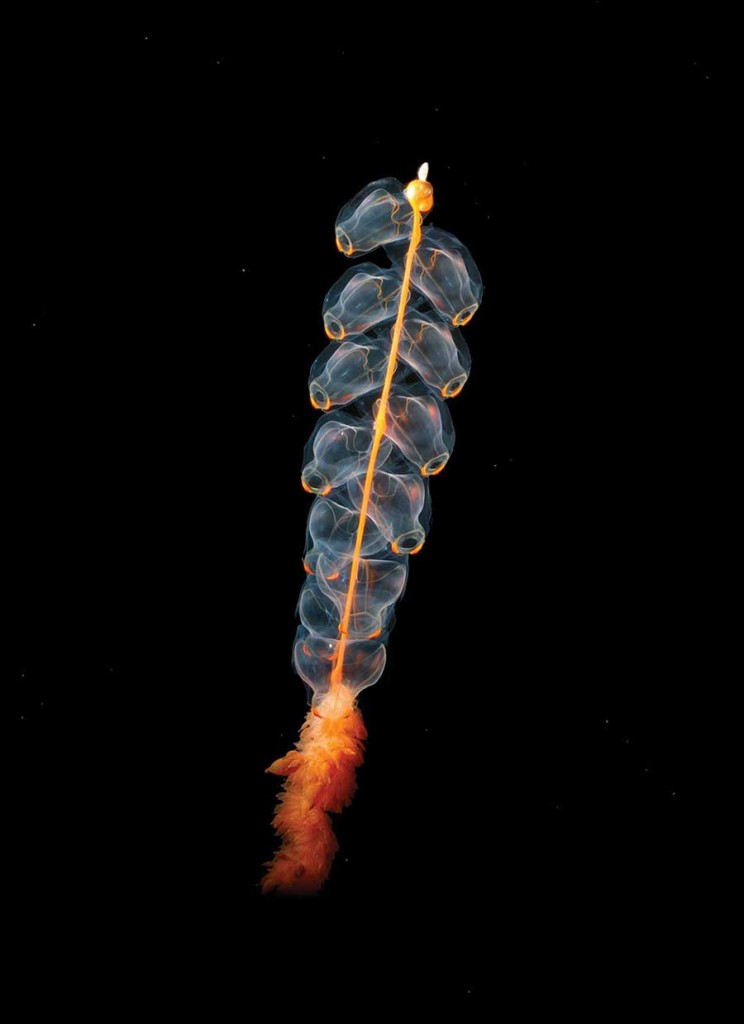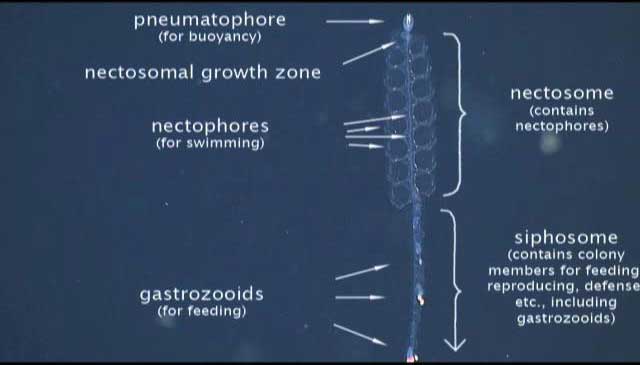Woods Hole, Massachusetts – A new research determined the swimming mechanism of jellyfish-like creatures, that use multiple jets. While jet propulsion is common among animal swimmers such as squids and jellyfishes, the integration of multiple jets into a coordinated propulsive entity is very rare in the animal kingdom.
The study, published in Nature Communications, monitored a colonial jellyfish-like species known as Nanomia bijuga. The animals use a practical, multi-jet propulsion system based on a team work divided between young and old members of the colony. Scientists suggest that this locomotive movement could help determine the design of underwater distributed-propulsion vehicles.

Lead author of the study, John Costello from Providence College, scientist and Whitman Center investigator at the Marine Biological Laboratory (MBL) in Woods Holes, said about the structure, “This is a highly efficient system in which no developmental stage is wasted. It’s a quite sophisticated design, for what would seem like a simple arrangement.”
For the process, young members are placed at the tip of the colony’s propulsive unit and use their little jets for turning and steering. The older and bigger members who are farther back, provide powerful thrusts as the colony travels from the depths to the surface of the ocean.

N. bijuga, which is related to jellyfish, anemones and corals, belongs to a group of colonial organisms, called physonect siphonophores. They are avid predators of plankton. To obtain food, physonects travel to the surface at night and return to darker depths during the day to apparently avoid visual predators like fish. The jet-producing members of the physonect colony, called nectophores, are genetically identical clones organized in a propulsive unit called a nectosome. A nectosome is only a few centimeters long, but it carries so many groups of reproduction and feeding units that can even reach 200 meters a day.
To analyze their swimming system, researchers recorded physonects in Friday Harbor, Washington. Then they used image analysis (laser light sheet illumination) to measure particle flows around the colony as it moved. With this, scientists were able to observe the size and thrust of every individual jet, including their angle in relation to the animal’s axis.
The study found that the youngest creatures pushed out the least amount of water with their jets. However, because they are located at the tip of the nectosome, far from where the nectosome connects to the rest of the colony, a small, directed force by the young members has a huge effect on turning the whole colony. The young members also allow N. bijuya to rapidly change its course and even completely reverse its direction of swimming. As new nectophores are added at the tip of the nectosome, the older move back, where their larger contractions are useful for thrust.
Authors explained that, “These patterns permit all members of the colony to make important contributions to the propulsion and maneuvering traits that are critical for the success of N. bijuya in its natural environment.”
Finally, Costello said about the youngest animals “Just because the young ones are small, it doesn’t mean they aren’t important.”
Source: Nature Communications
